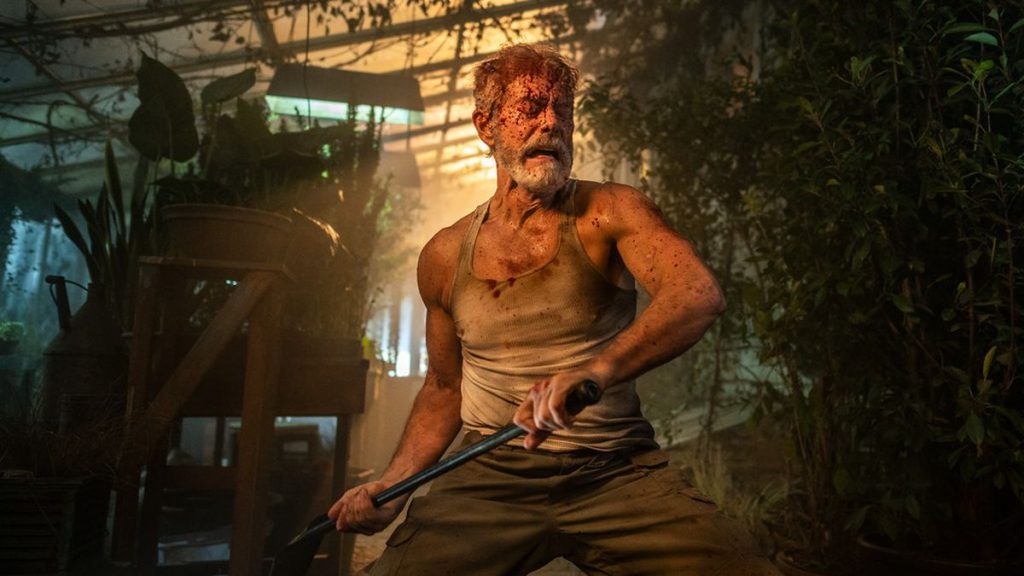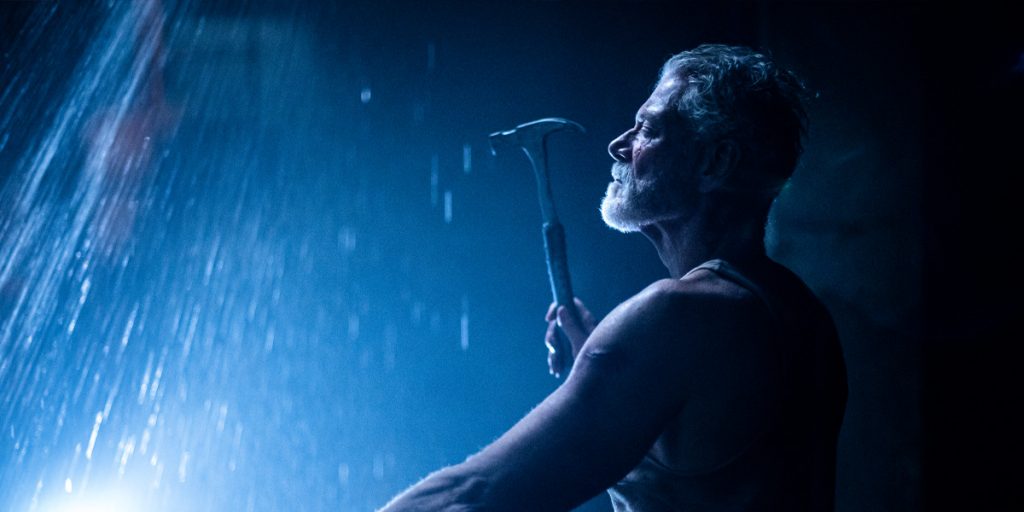Gone is the tense and terrifying silence of the first film, replaced instead by the confused and cluttered noise of its sequel, Don’t Breathe 2.
When Don’t Breathe first released in 2016, audiences everywhere were quite literally following the title as a direct instruction, voluntarily or not. Such was the taut tension and stifling silence of Fede Álvarez’s (Evil Dead, The Girl in the Spider’s Web) fantastic horror, it is difficult to think of another film from the 2010s – other than A Quiet Place (2018) – that had such effective and gripping fear built around sound and, more often than not, silence. But move forward five years (or eight, in the Don’t Breathe timeline) and we are presented with a limp and frequently lazy follow-up, devoid of the things that made the first so effective but also lacking in anything fresh to take things forward. Hints of the first film drip through on occasion in Don’t Breathe 2, reminding us of the strengths of its predecessor but also forcing us to look at the inadequacies of the sequel square on. And the sight is neither pretty nor wholly entertaining.
Even before the worldwide release of Don’t Breathe 2, audiences were wary. The trailers seemed to imply that Stephen Lang’s (Avatar) blind victim-turned-villain would now be an anti-hero of some sorts, protecting a young girl from a group of violent men. It’s not the first time a film has presented a multifaceted hero on screen, and it certainly won’t be the last; anti-heroes enthral us with their complexities.
Yet the issue lies with Lang’s character Norman Nordstrom’s actual actions at the end of the first film, in which it was revealed he had raped a woman repeatedly before attempting to do so again to another. It was controversial enough at the time, a shocking conclusion to a thrilling ride, yet few could imagine that he would be offered a redemption arc in the sequel. And whilst Norman (or The Blind Man, as he is also referred to) isn’t quite gifted full-blown sympathy from the screenplay of Don’t Breathe 2, there are still too many hints at the possibility of it. Perhaps the most glaring hint is Norman – the murderer/rapist – unable to kill a dog because, hey, he’s not all bad? It is a weird, baffling moment that only adds to the issues.

Eight years after the events of the first film, Norman lives a secluded life with a young girl, Madelyn Grace’s Phoenix (because, well, she was rescued from a fire), who he has adopted as his own. The two live in a house like that of the first film, partaking in lessons of survival and all the while sheltering (or as Norman says, “protecting”) Phoenix from the outside world. The tranquillity doesn’t last long, or at least not when we the audience tune in. A group of tattooed drug dealers – seemingly connected to an illegal organ black market – target the secluded homestead, much in the same way that the burglars did in the first Don’t Breathe film.
Don’t Breathe 2 is again written by Álvarez and Rodo Sayagues, but this time the latter takes on responsibilities at the helm in his directorial debut. It would be unfair to say Sayagues’ direction is the reason Don’t Breathe 2 fails to ignite and indeed much of the film’s inadequacy comes from the unfocussed, cluttered plot which follows a problematic path. Sayagues may be guilty of directing action that is too poorly lit and difficult to follow at times, but he generally shows a keen eye for creating visceral fight sequences to blood-spattering, bone-crunching effect. An opening sequence which gives a false positive promise to Don’t Breathe 2 also impresses, with Sayagues and his DOP, Pedro Luque, opting for a one-shot take as the group of men stalk Phoenix through the house. It’s a shame, then, that Don’t Breathe 2 loses this early promise, ushering away this sharp tension in favour of more generic, violent action.
Perhaps the biggest strength of Don’t Breathe is the centralisation of the events in one location; the majority of the film takes place in Norman’s house as he stalks the intruders throughout it. Every nook and cranny of this location is ringed dry for maximum effect and scares, from the small cupboard in the front room to the cramped kitchen and its exit to freedom, right down to the menacing and engulfing darkness of the basement.
Don’t Breathe 2 never finds its footing in this respect, flitting from Norman’s house to the forests next to it before finally ending in a large warehouse setting. It’s a jumbled mess of places – none of them providing a good enough blanket for the action to unfold – and is ultimately reflective of the apparent confusion within Álvarez and Sayagues’ screenplay. It rarely, if ever, finds or commits to a tone, path or feeling, and the result is simply middling.
Don’t Breathe 2 is by no means unwatchable. There are moments of genuine entertainment, gleefully gory violence, enjoyable jump scares, relatively impressive fight scenes and a satisfyingly gruff performance from Lang based around his physicality. Roque Baños’ strings-based score also stands out as a tense, taut sidenote to proceedings. And yet all this becomes lost in a cloud of problematic plot points and confused tones and styles. Aside from Madelyn – who frankly doesn’t form into a hugely compelling character – there is no one to side with, no one to root for. Don’t Breathe 2 can be overwhelmingly nihilistic at times, but never in a challenging or complex manner. It’s a sequel that, unlike its predecessor, won’t have you forgetting to inhale due to nerves nor holding your breath for fear of being heard. Instead, you’ll breathe all you want, and you’ll probably add in a fair few sighs and a fair few groans along the way too.
Don’t Breathe 2 is now available to watch on digital and on demand.

